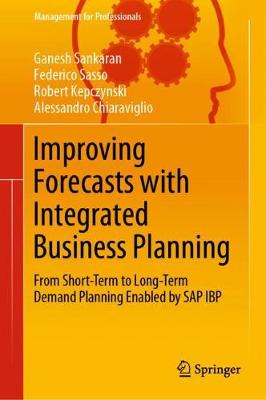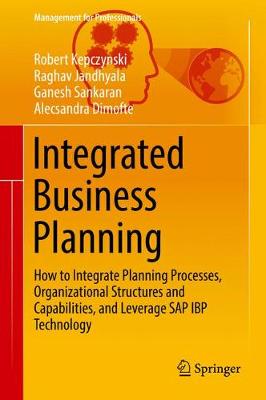Management for Professionals
3 total works
Implementing Integrated Business Planning
by Robert Kepczynski, Alecsandra Dimofte, Raghav Jandhyala, Ganesh Sankaran, and Andrew Boyle
The book starts by characterizing disconnected planning and contrasting this with key elements of a transformation project approach. It explains the functional foundations and SAP Hybris, Trade Promotion Planning, Customer Business Planning, ARIBA, and S/4 integration with SAP IBP. It then presents process for integrating finance in IBP. Annual planning and monthly planning are taken as examples of explain Long term planning (in some companies labeled as strategic). The core of the book is about sales and operations planning (S&OP) and its process steps, product demand, supply review, integrated reconciliation and management business review, illustrating all steps with use cases. It describes unconstrained and constrained optimized supply planning, inventory optimization, shelf life planning. We explain how to improve responsiveness with order-based allocation planning, sales order confirmation, and big deal / tender management coupled with simultaneous re-planning of supply. The book closes with a chapter on performance measurement, measurement of effectiveness, efficiency, and adherence.
Improving Forecasts with Integrated Business Planning
by Ganesh Sankaran, Federico Sasso, Robert Kepczynski, and Alessandro Chiaraviglio
This book provides both a broad overview of the forecasting process, covering technological and human aspects alike, and deep insights into algorithms and platform functionalities in the IBP toolbox required to maximize forecast accuracy. Rich in technical and business explanations, it addresses short-, medium- and long-term forecasting processes using functionalities available in demand planning and demand sensing.
There are also several theoretical concepts underpinning the algorithms discussed; these are explained with numerical examples to help demystify the IBP forecasting toolbox. Beyond standard procedures, the book also discusses custom approaches (e.g. new segmentation criteria, new outlier detection and correction methods) and new methods (e.g. the use of Markov chains for forecasting sporadic demands), etc. It subsequently benchmarks common practices using these innovative approaches and discusses the results. As measurement is an important precondition for improvement, an entire chapter is devoted to discussing process improvement and value using the Six Sigma methodology. In closing, the book provides several useful tips and tricks that should come in handy during project implementation.


